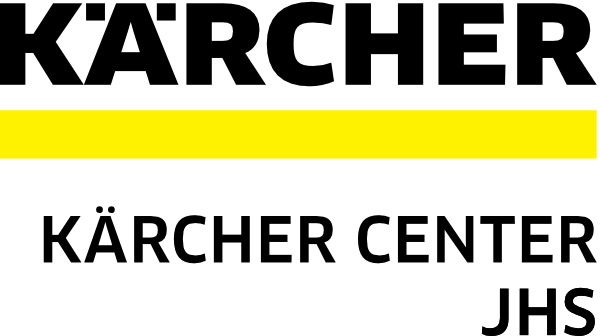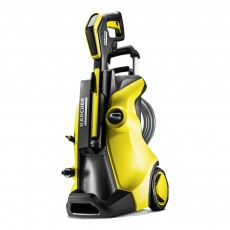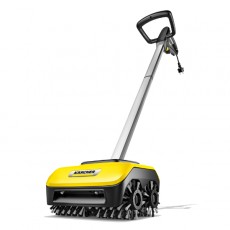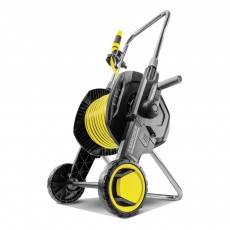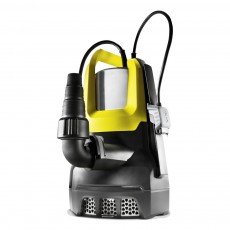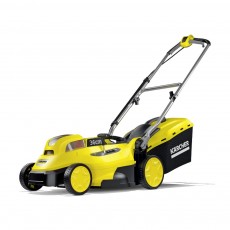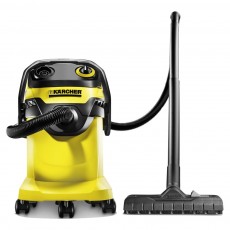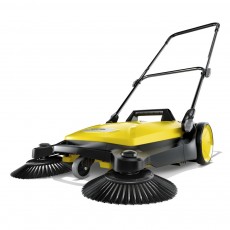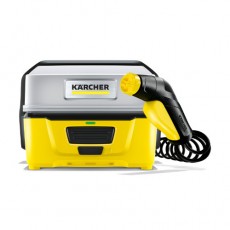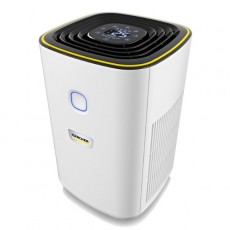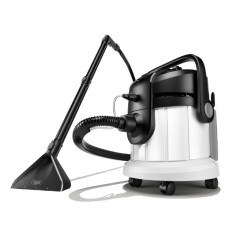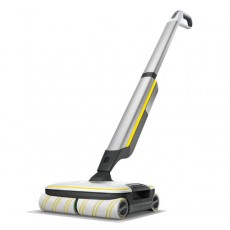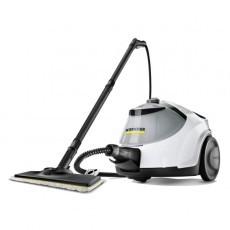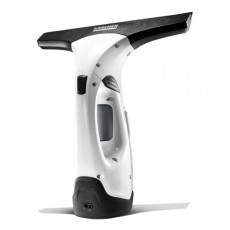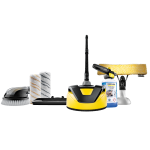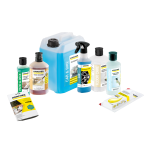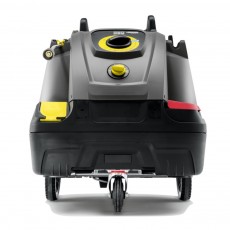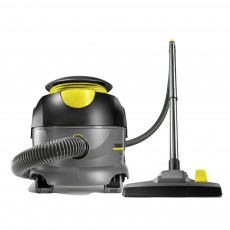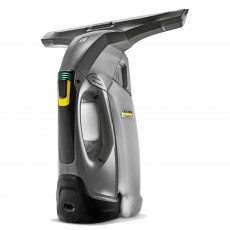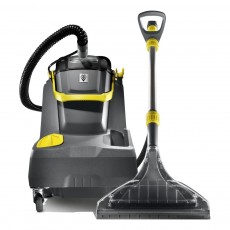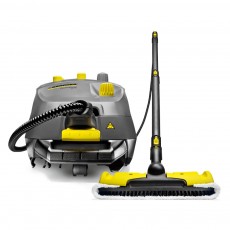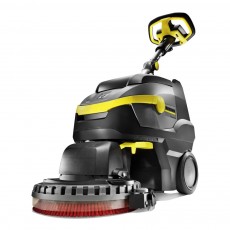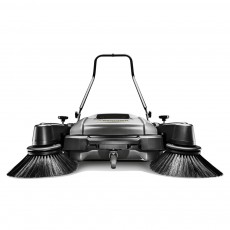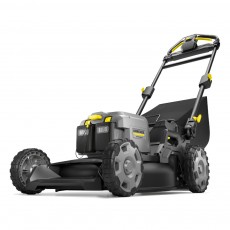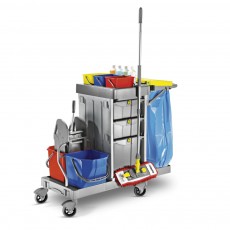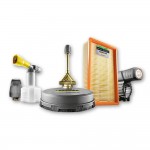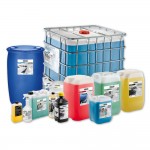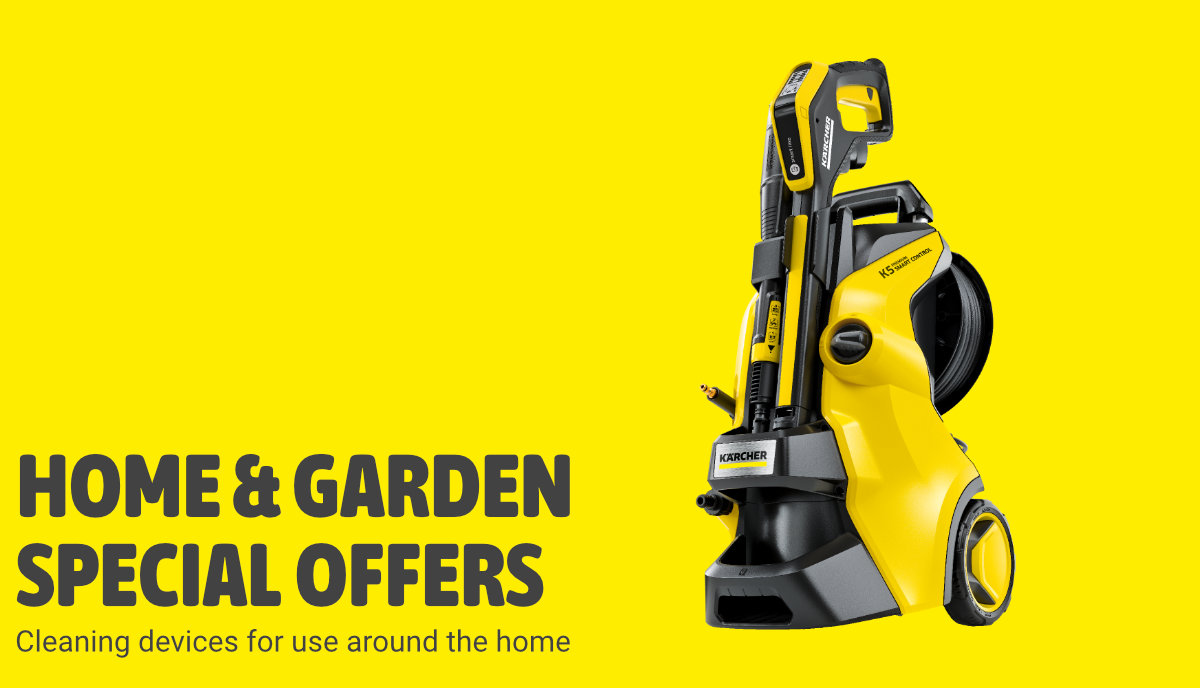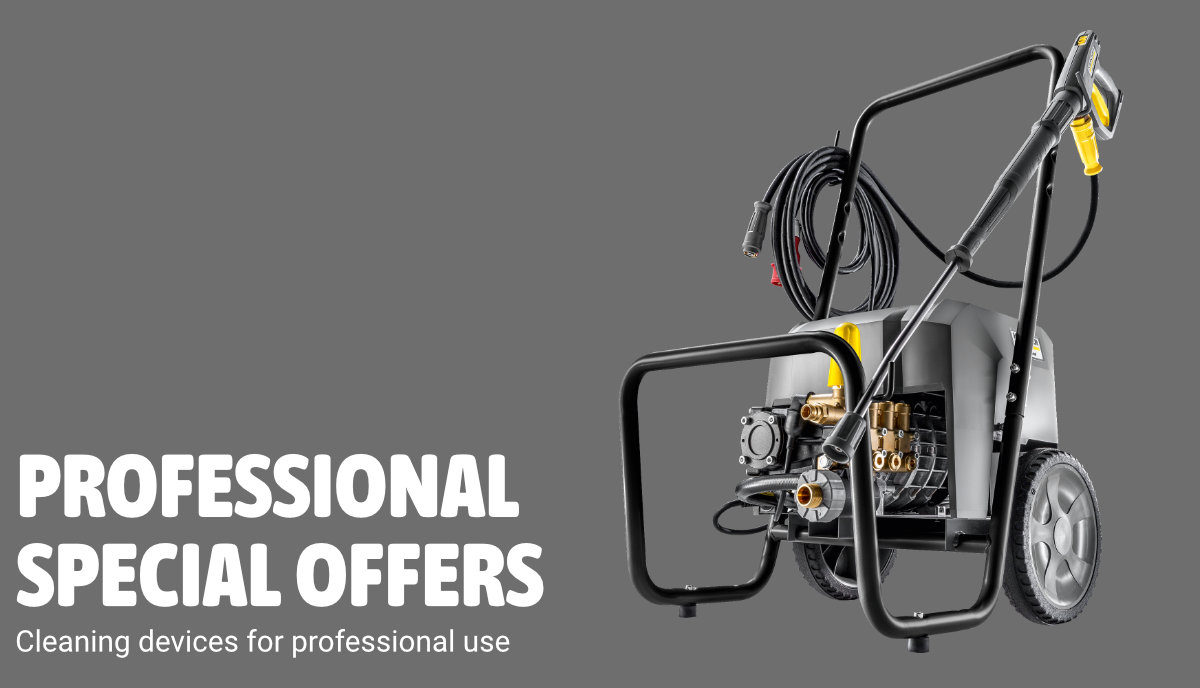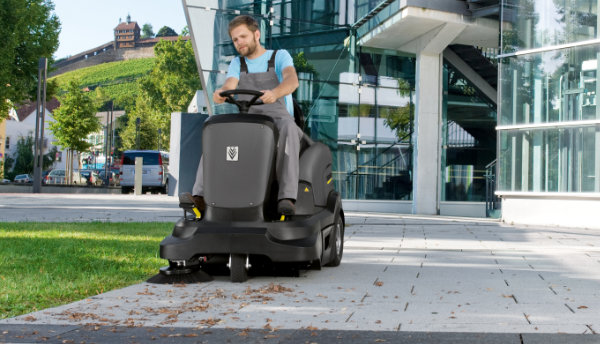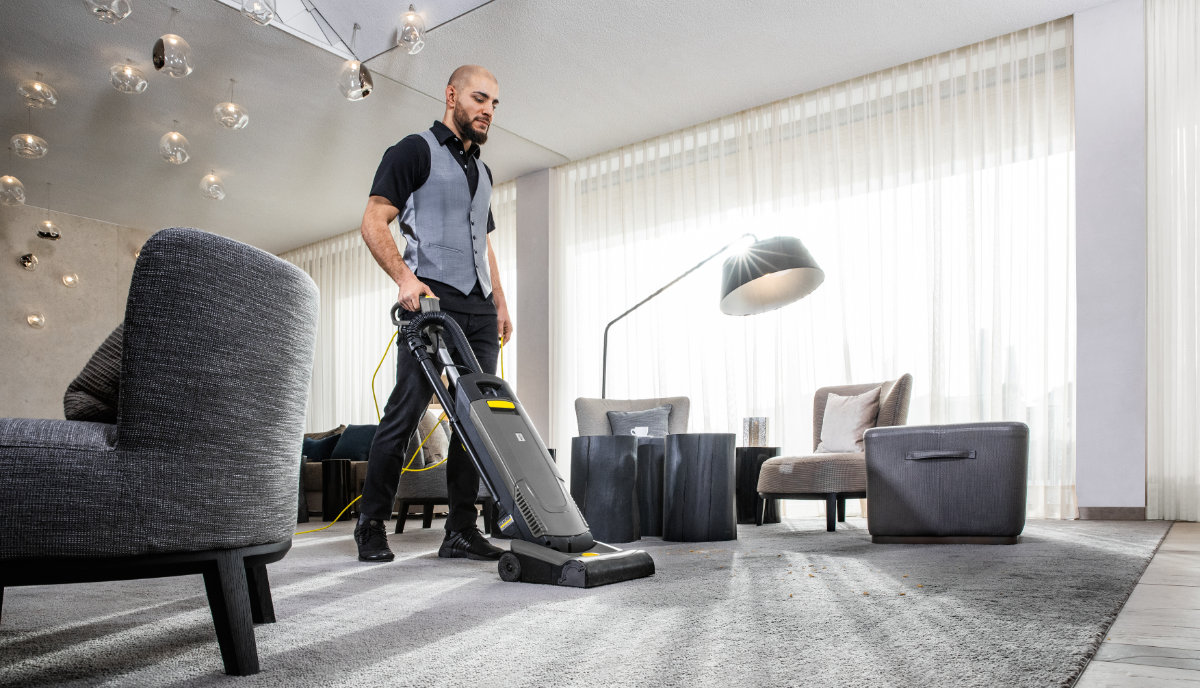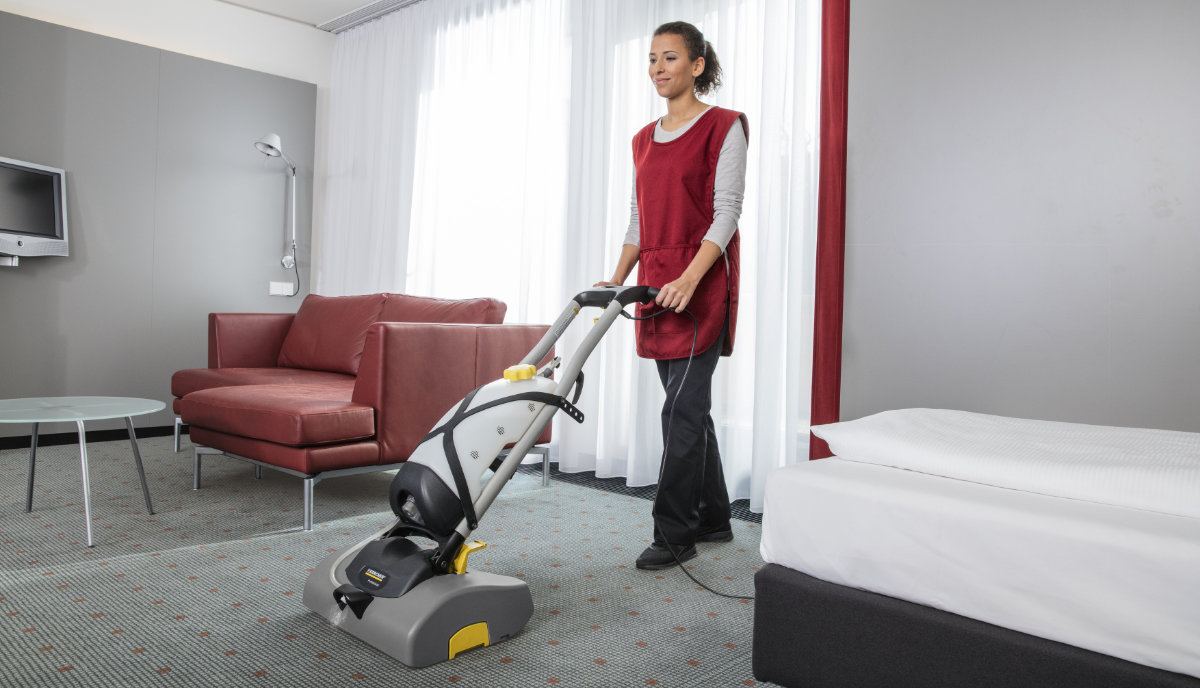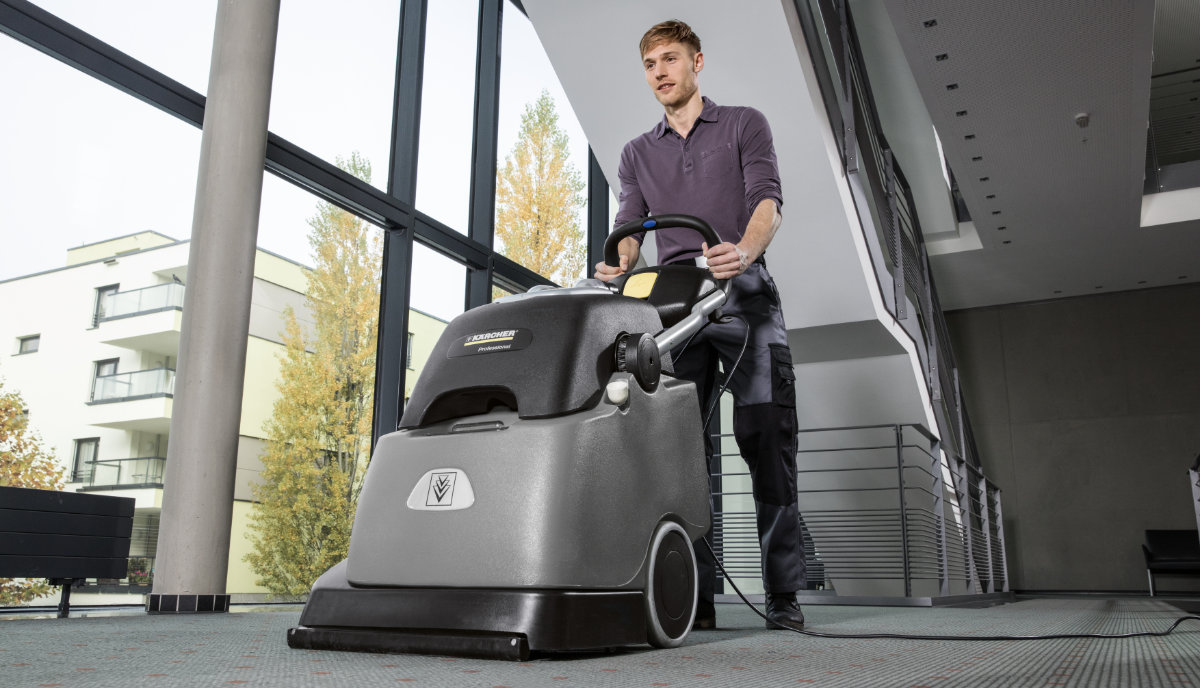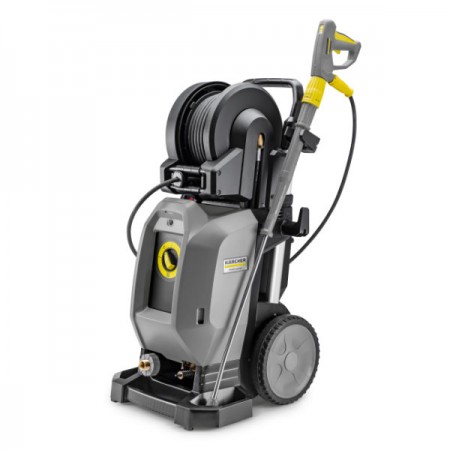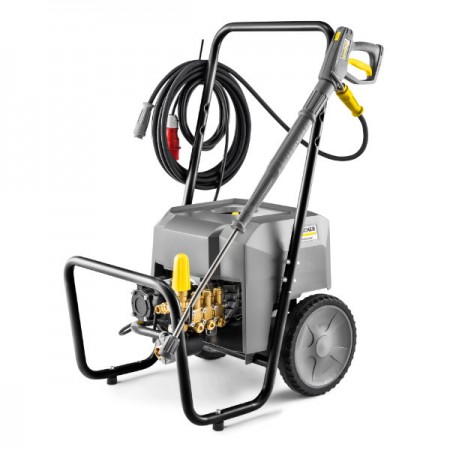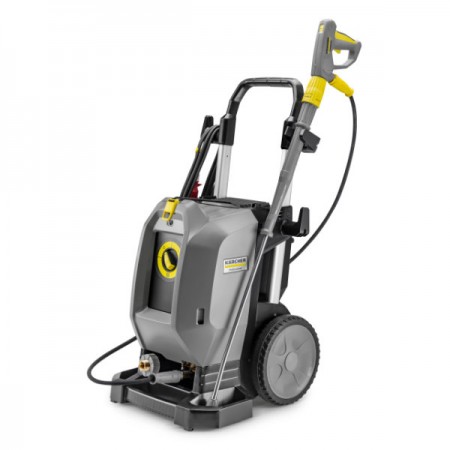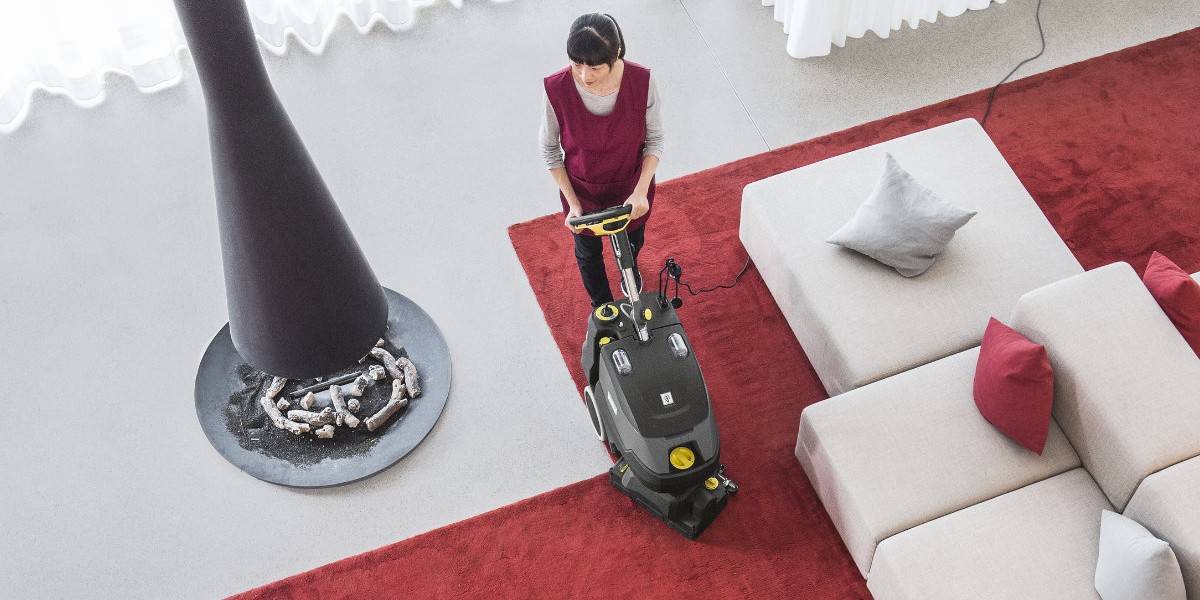
Regular and efficient cleaning is hugely important within the hotel and hospitality sector. Using a PDIR cleaning routine is a very good place to start.
A regular and efficient cleaning routine is hugely important within the hotel and hospitality sector in particular. In fact, it is essential. And that applies to outside and inside areas, including the rooms and corridors. A well-thought-out concept, a regular schedule and suitable machines and cleaning agents are what's required to get it right. The PDIR cleaning process is a very good place to start.
So, What is the PDIR Process?
When it comes to keeping hotels and restaurants clean and ensuring that they retain their value, the four types of cleaning in the PDIR process come highly recommended. The acronym "PDIR" is based on the first letters of the following cleaning functions:
Preventative
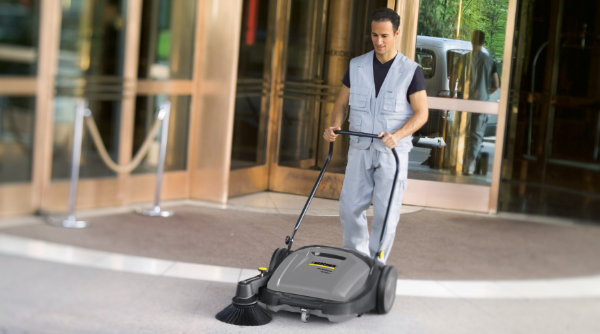
Removing dirt in the outside area before it is brought inside the building
Daily
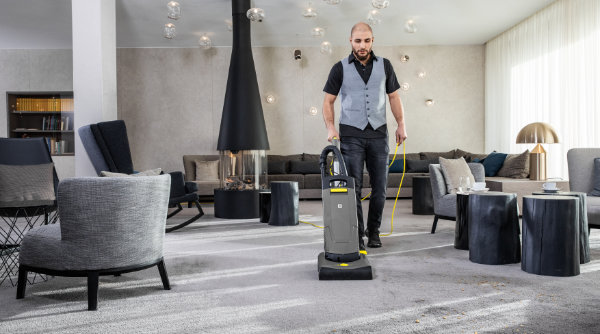
Routine daily cleaning to maintain the level of cleanliness and presentation.
Interim
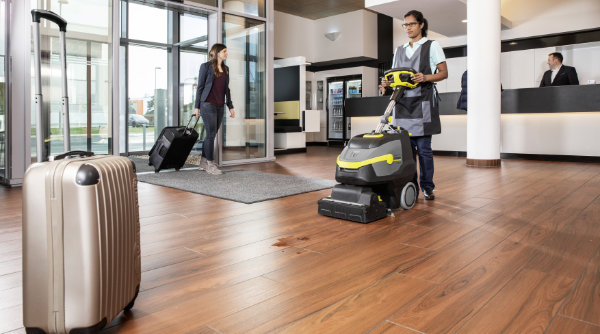
Undertaking an Interim cleaning regime keeps time-consuming deep cleaning to a minimum
Restorative
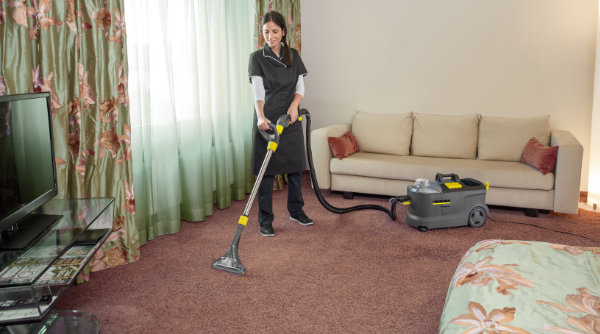
Time-consuming and thorough deep cleaning of floor coverings, carpets and other textiles
Organization is the key to success
PDIR cleaning really comes into its own when the timings of all four types of cleaning are coordinated as part of a well-organised process. As long as this cleaning system is used regularly, savings can be made on the time, materials and staff resources allocated to daily maintenance, whilst ensuring that the building is well presented and clean for you and your clients.
Preventative cleaning: Keeping outside areas spotless
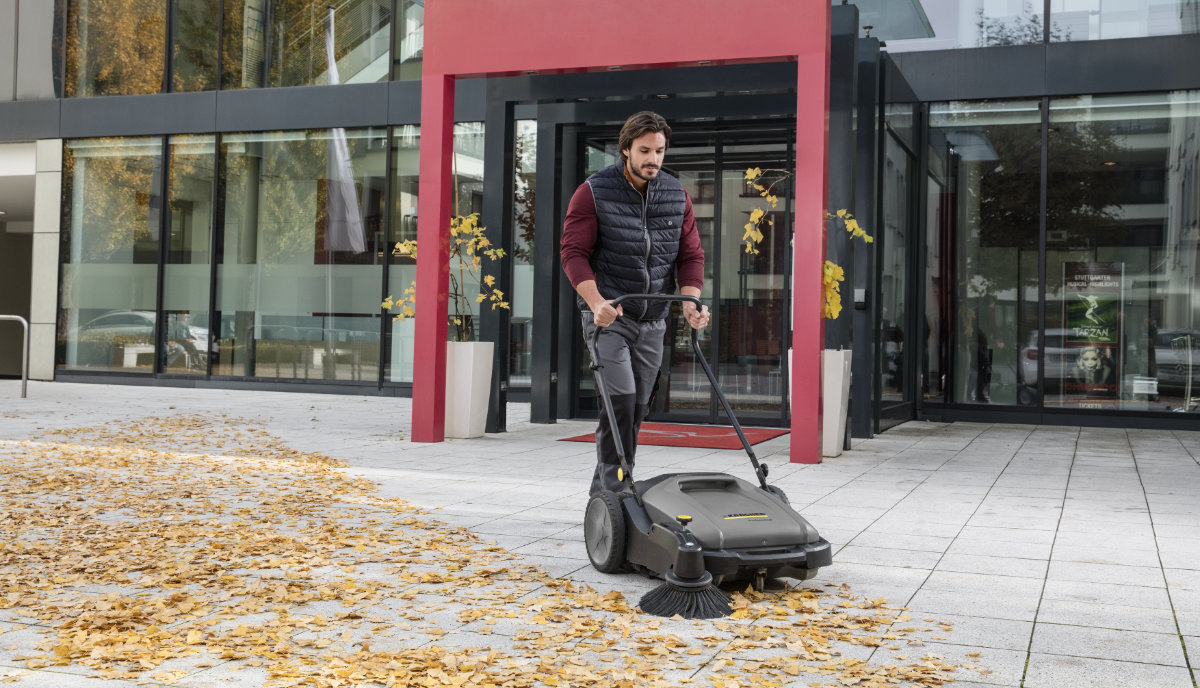
The size of the outside area that needs to be cleaned will determine the type of Karcher Professional Sweeper that is required. As a general "rule-of-thumb" it is best to look at a sweepers theoretical area performance and consider a sweeper that can sweep the area required within 1-2 hours. For small to medium-sized areas, the best option is likely to be a push walk-behind sweeper (for smaller areas) or a traction Walk-behind Sweeper. If you will be sweeping outside exclusively a battery or petrol engine powered sweeper will be suitable, however if sweeping needs to extend indoors as weel, then only a battery powered Walk-behind sweeper should be considered.
For larger areas greater than 1,000 m² and more, Ride-on Sweepers offer a more productive and quicker solution to sweeping and offer larger sweep capacities that can also include hydraulic sweep containers for even easier emptying. These larger Ride-on Sweepers are also available in battery driven, petrol engine and diesel engine for increased versatility. As with Walk-behind Sweepers, Ride-on Sweepers that are battery powered are recommended for enclosed indoor areas, whilst the engine driven ride-on sweepers are more suitable for external areas.
Stubborn stains and soiling, for example caused by moss, lichen, remnants of tar or chewing gum, bird droppings and leftover food, can additionally be removed using a Professional Pressure Washer.
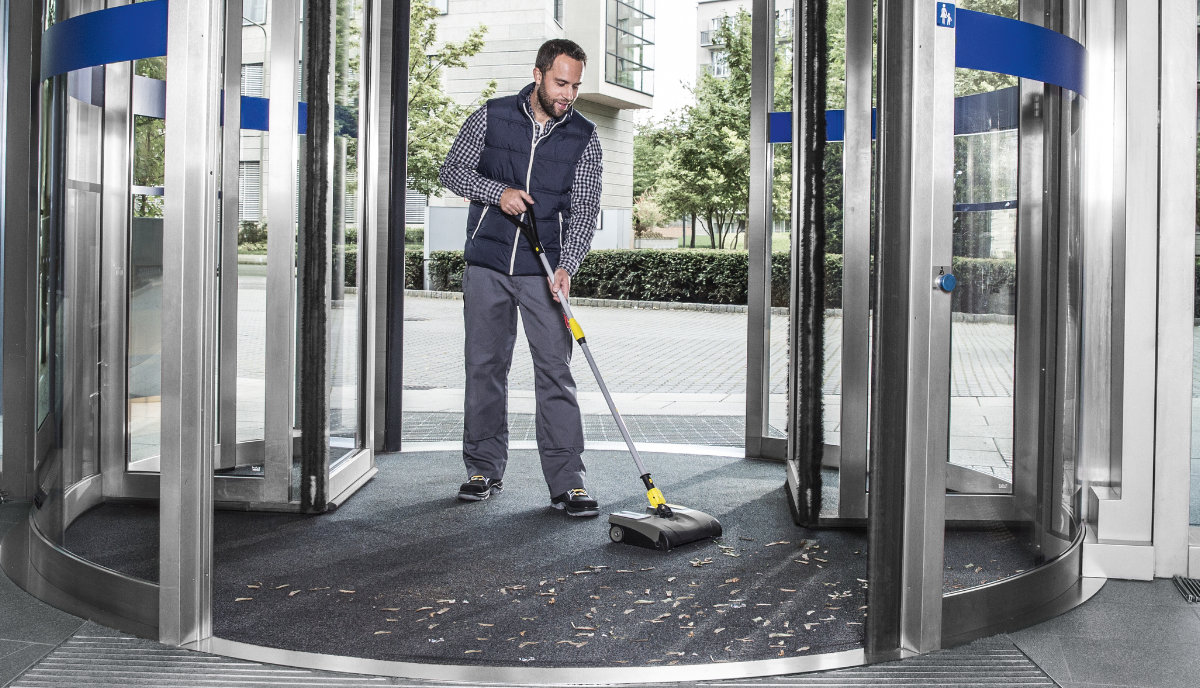
An effective system for catching dirt also falls within the scope of preventative cleaning. Large mats should be placed both on the inside and outside of the entrance area (for about the length of at least four walking steps). This is to remove dirt from staff, visitors and clients shoes and bind it to the entrance matting so that it cannot be spread around the entrance area further. The entrance mat bristles should be more abrasive on the outside, whilst inside mats can have a softer, more absorbent texture.
If any dirt does make its way into the building despite these measures having been taken, it can be removed in no time through a spot cleaning process. An electric broom or battery-powered vacuum cleaner are perfect for this as they have no trailing mains cable that can cause a trip hazard and are designed to be much quieter in use so are also not a nuisance noise when being used for this type of spot cleaning. This means that they can be used as and when required.
Daily maintenance cleaning: For hygiene and a squeaky clean image
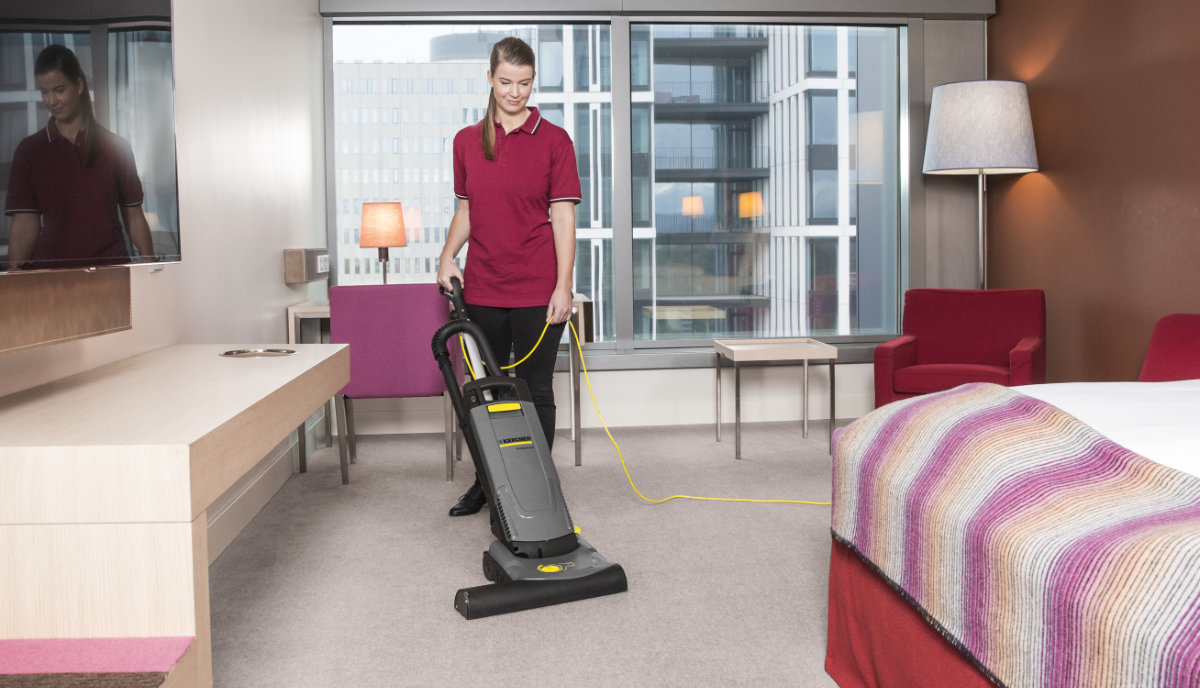
Upright brush-type vacuum cleaners are especially effective at cleaning textile floor coverings and carpets on a daily basis. The carpet brush in the suction head is powered by a separate motor. This means that it reaches right down into the base of the pile, driving the loosened dirt up towards the suction channel and also rejuvenating the pile of the carpet at the same time. This avoids any damage being caused to the carpet or rug. Stains caused by coffee, tea, red wine or tar should also be immediately removed using a stain remover in order to give an overall impression of cleanliness. Universal Stain Remover RM 769 is ideal for this. Universal Stain Remover RM 769 can also be applied to any textile floor covering and upholstery.
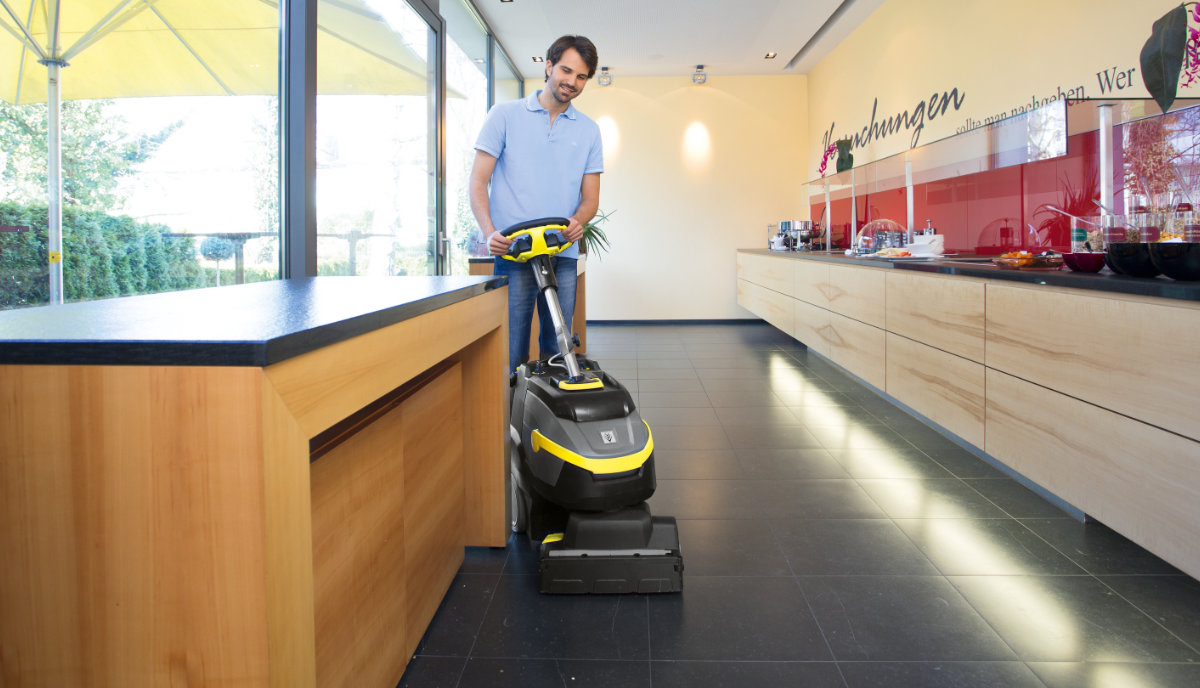
When it comes to cleaning resilient and hard floors, such as linoleum or ceramic tiles, manual mopping systems are a popular choice. However, if the area to be cleaned is larger than 100 m², it may make more financial sense to use a Professional Compact Scrubber Drier, which are able to undertake a far deeper clean than doing everything by hand. In addition to this, Compact Scrubber Driers immediately vacuum up loosened dirt retained within the detergent and drythe floor more rapidly, making the process a great deal more hygienic and safer due to the reduced risk of slip hazards (you may wish to read our article One Spill Could Cost A Lot More for details on this topic).
A disc type scrubber drier (BD) is ideal for smooth floors, whilst a roller brush scrubber drier (BR) is more suitable for uneven surfaces such as safety flooring, ceramic or riven tiles, although both types are still considerably more effective than a conventional manual mopping system. FloorPro Wipe Care RM 780 makes for an ideal cleaning agent since it generates little foam and does not pose a risk of slipping once cleaning is complete.
Interim Cleaning: Using the right methods to do away with downtimes
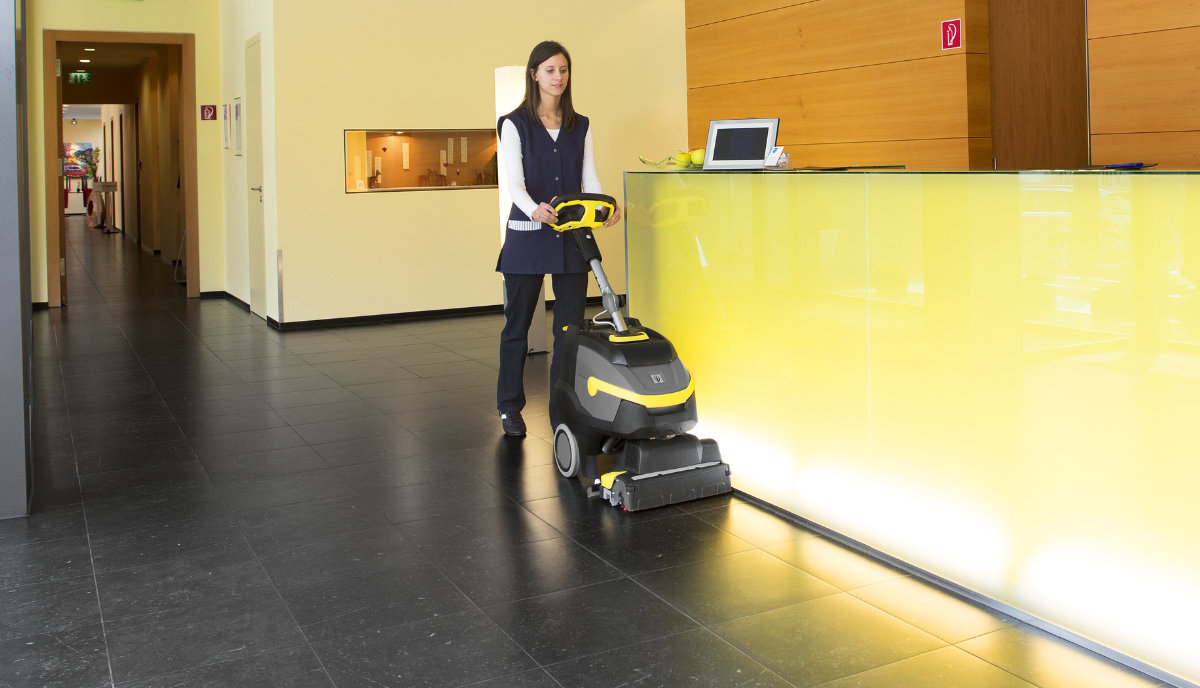
Hard and resilient floor coverings can be kept clean in no time through Intermediate Cleaning as part of a one-step method. This involves the cleaning agents being applied using a Professional Scrubber Drier and the surface being cleaned is both scrubbed and vacuumed in the same process. The following factors should be taken into account:
- Selection of the correct brush system (roller or disc) depending on the surface type in question
- Use of the correct brush or pad material (hard or soft) depending on the type of dirt that needs to be removed and the floor type it needs to be removed from
- Use of a correctly diluted solution of the correct and most effective cleaning agent depending on the amount of dirt and the surface type involved
It is worth noting that Roller Brush technology (BR) is far more effective than Disc Brushes due to a higher contact pressure and higher rotation speed of the brushes.
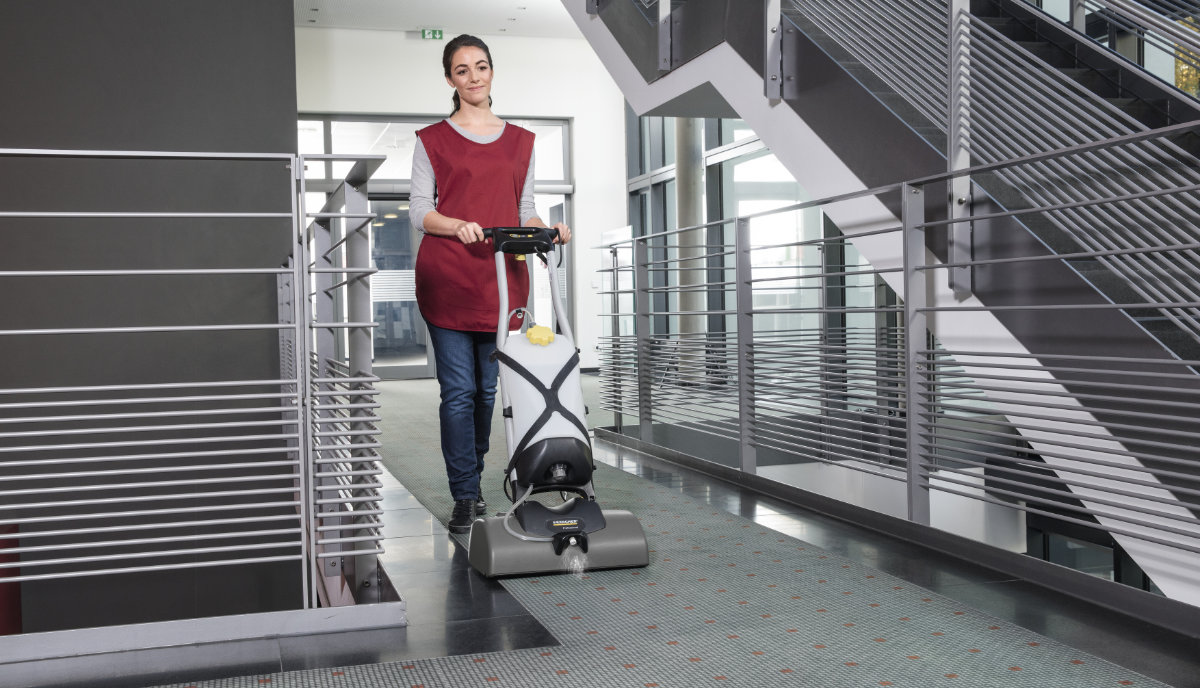
The iCapsol method is perfect for the intermediate cleaning of carpets. Carpet Machines with roller technology are used with the addition of the special iCapsol cleaning agent to encapsulate the dirt that is on the fibres of the carpet. This works by spraying a thin layer of the iCapsol cleaning agent on to the carpet before the area is treated with a compatible Carpet Cleaner. Using the iCapsol system, the carpet only gets slightly damp in the process, which means that it is soon ready to walk on again after cleaning. The iCapsol Cleaning Agent encapsulates any dirt loosened by the roller brushes and separates it from the carpet fibres and then it crystallizes into a powder like material (containing the dirt), allowing it to be then be removed easily with an Professional Upright Brush-type Vacuum Cleaner after just a drying time of 30 minutes. This method does not leave behind any cleaning agent residue, meaning that the carpet is less likely to resoil again.
Cleaning with an encapsulation powder is also another way of performing an Intermediate Clean of carpets. This method involves a special powder based cleaning agent being manually sprinkled on to the carpet, worked in using a specialist machine, and then vacuumed up using a Professional Upright Brush-type Vacuum Cleaner once dry.
Restorative Cleaning: Restoring the original condition
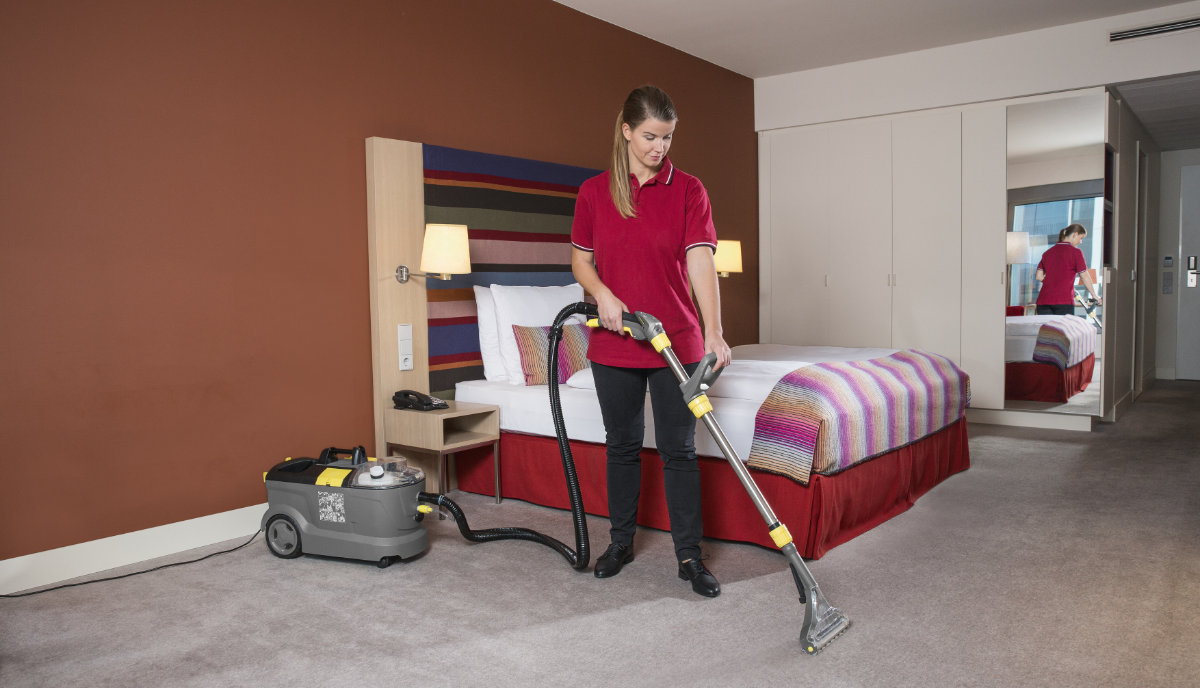
A Spray Extraction Carpet Cleaner is used for fibre-deep cleaning carpets. In order to restore the design and colour to their original condition, the selected cleaning agent is worked into the carpet by using either a floor nozzle or with a nozzle and brush system (for walk behind machines) and applying a specialised detergent spray under pressure. The loosened dirt is then vacuumed back up again as part of the same process by the Spray Extraction Carpet Cleaner. After this has been completed, it is advisable that the carpet that has been cleaned is rinsed with clean water only, once again vacuuming this up at the same time. An Upright Brush-type Vacuum Cleaner is then used to vacuum the surface once it has fully air-dried (for at least eight hours). During this drying period, it is important that nobody walks on the floor whilst it is drying.
If a hand nozzle is used, the spray extraction method can also be applied for cleaning upholstery and mattresses too. Once fully cleaned and dried, it makes sense to apply a specialist fibre-protecting agent on to the carpet or upholstery to protect them from re-soiling and accidental stains.
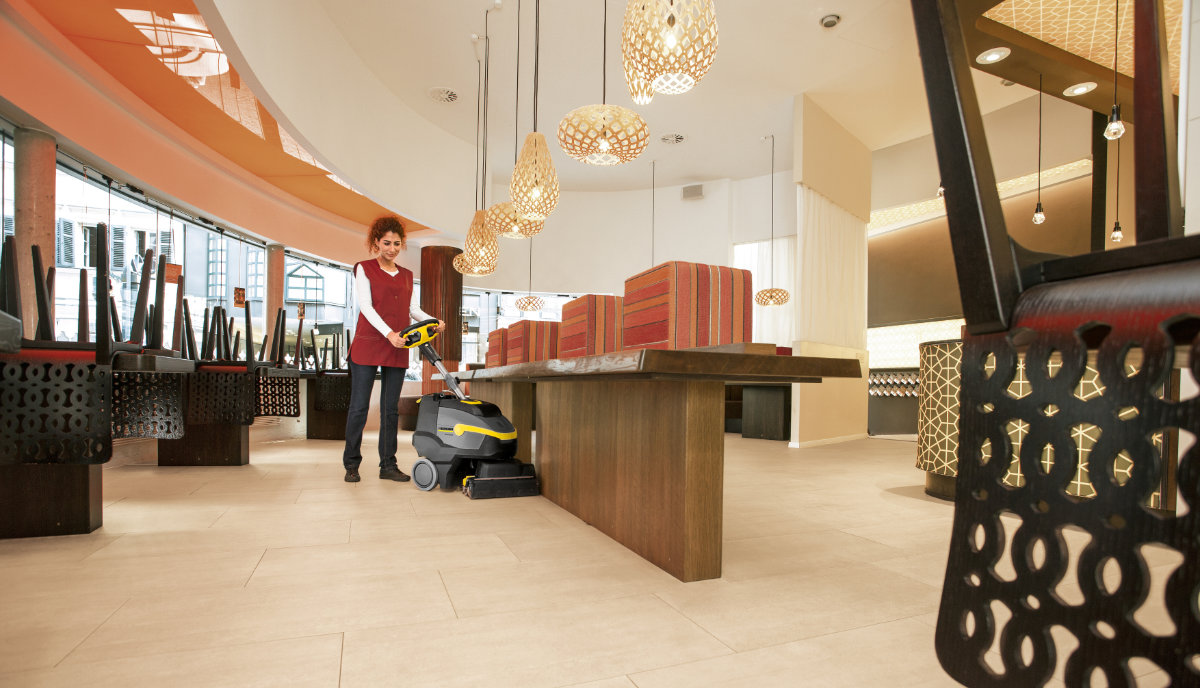
Professional Scrubber Driers need to be used for deep cleaning when hard floors have become unsightly thanks to the build-up of dirt and cleaning agent residues. Whilst Professional Scrubber Driers are the same machines used to perform the Interim Cleaning process for cleaning hard floors, the method to do this differs in that a two-step approach is used. A cleaning agent selected is applied using the machine (this is generally a specialist deep cleaner that is diluted in a higher dosage) and then scrubbed evenly (with the vacuum switched off) using a few passes - this gives the deep cleaning detergent the necessary contact time to become effective. Once the dirt has been loosened and is held within the specialist deep cleaning agent solution on the floor, the Scrubber Driers Vacuum is then turned on and the dirty water and specialist deep cleaner are extracted from the floor.
The floor is then rinsed using just clean water without detergent present using the one-step method detailed in Interim Cleaning.
Resilient floor coverings such as linoleum or PVC, can be protected with another coating once they have dried off sufficiently to impart additional slip resistance and protection to the floor. Natural stone floor coverings and tiles do not generally need a protective coating.
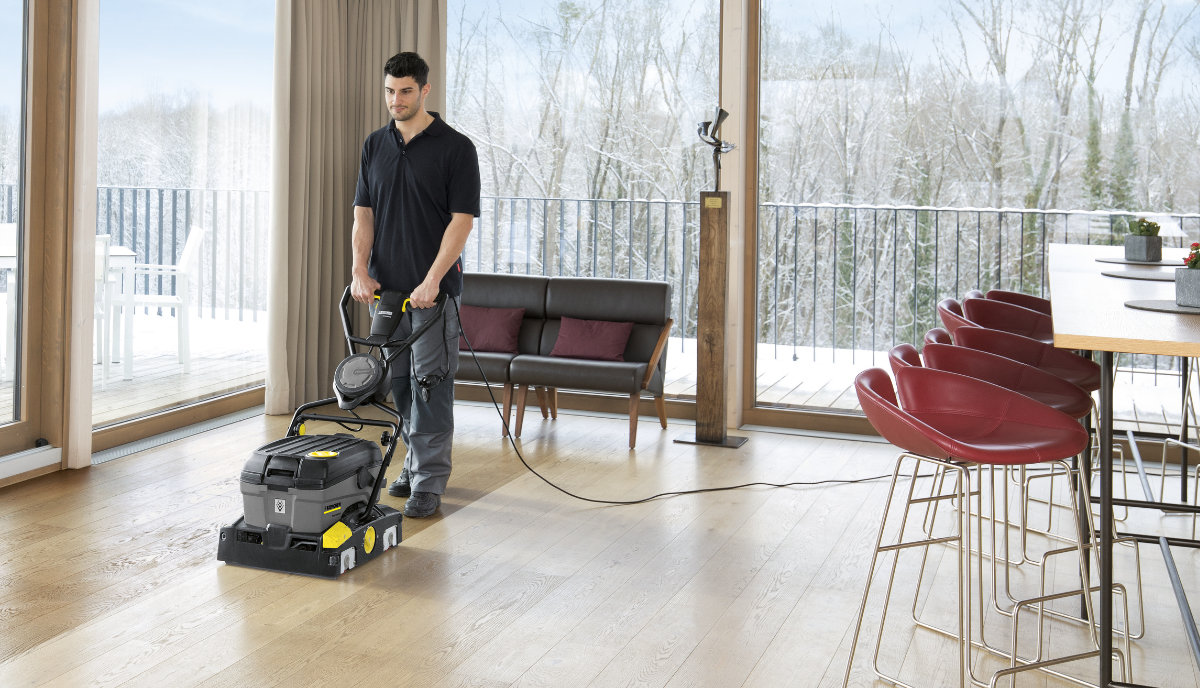
If wooden floor types are extremely dirty, then there is no choice other than to use a Professional Scrubber Drier with a roller scrubbing head (BR) to perfrom Restorative Cleaning. The one-step cleaning method should be used to minimise the amount of water applied to the wooden floor, as some wooden floor types may be sensitive to excessive water. For wooden floors, the cleaning agent (it is advised that a surfactant-free cleaner such as Universal Cleaner RM 770 is used) is applied and scrubbed in the same direction as the wood grain, whilst the loosened dirt is sucked back up immediately by the Professional Scrubber Drier. This process is repeated until the wooden floor has started to resemble its original appearance and patina. Once the wooden floor has been given time to adequately dry following cleaning, a protective wax or oil coat can be applied by hand and the wooden floor can then be polished dry using a set of soft polishing brushes fitted in place of the normal scrubbing brushes on the Professional Scrubber Drier.
